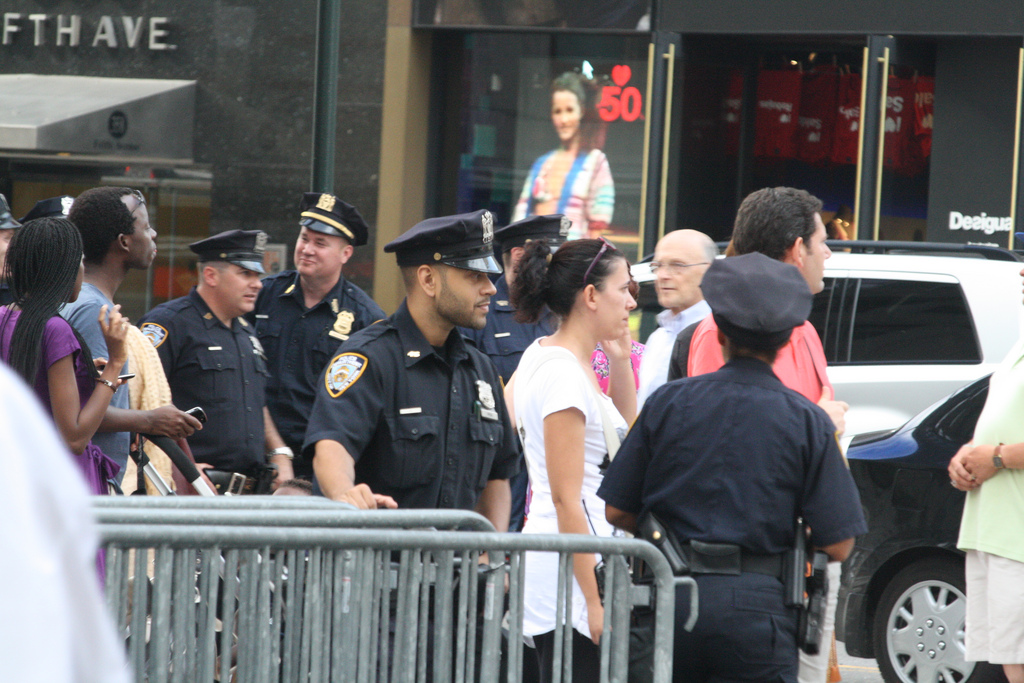It looks like NYPD patrol officers are back to work after their unofficial but widely acknowledged work slowdown. The NYPD police-strike-that-wasn’t reflected outrage at the fatal shootings of officers Wenjian Liu and Rafael Ramos, and anger at comments perceived to be hostile to the police made by Mayor Bill de Blasio.
The slowdown’s effects were dramatic. According to the department’s own statistics, in the last week of 2014, NYPD officers issued 347 criminal summonses for minor offenses. In that same week a year earlier, there were 4,077. Arrests told a similar story: just 2,401 in the last week of 2014, down from 5,448 in 2013. In the precinct covering Coney Island, the police didn’t issue a single parking ticket, traffic summons or ticket for a minor offense. Now things are getting back to normal. But that raises another question: What is normal?
Arrest and summons numbers may be creeping back to match those of previous years, but that says little about what level of enforcement the NYPD (or any police department) should follow. What does it mean when Commissioner Bratton said that the police should get back to work? Or when police union head Patrick Lynch stated that NYPD officers should get back to “at least fifty percent of what they used to do” — fifty percent of what? Why should we assume the previous levels were optimal?
The truth is that we really don’t know and rarely agree on what “normal” enforcement is. As police researchers have demonstrated many times, police work is highly discretionary. Enforcement targeting every legal violation is impossible, so we leave it largely to the police to decide. Crack down on public drinking or turn a blind eye? That may depend on whether you’re in a college town or an inner city neighborhood. And even if a police department has its own enforcement priorities, individual officers themselves demonstrate wide variation in how they exercise their powers.
It’s hard to decide what ideal enforcement would look like. Criticisms of the NYPD’s controversial stop and frisk policies — ultimately dismantled by a civil rights lawsuit and a resulting settlement by the de Blasio administration— boiled down to overly aggressive enforcement of detentions and searches against young African-American and Hispanic men. Here, as in other places, zealous over-enforcement of the law can heighten community tensions with the police.
But backing off too much is trouble, too. Marked underenforcement of the law can have devastating consequences for communities. Worries that the police will always ignore crime can be as bad as worries that the police will always try to look for it. While not agreeing with the motivations behind the slowdown, some have trumpeted its effects — no dramatic crime increases — as proof that “broken windows” style policing has little effect on crime control (surely a premature conclusion). Yet some New York City residents have expressed concern about their safety without the usual police presence around.
Fifty-five years ago, law professor Joseph Goldstein observed how odd it was that legislatures usually gave no official discretion to the police to decide when not to enforce the law but that officers made such decisions all the time, mostly out of public view. He proposed the creation of Policy Appraisal and Review boards, composed of elected officials and criminal justice policymakers, to review police decisions not to enforce the law and to devise official enforcement policies. The idea didn’t gain any traction. External regulation of police discretion — with some exceptions — remains uncommon. The United States Supreme Court isn’t that interested, either. Yet when rank and file officers of the largest police department in the United States decide not to enforce the law all at once, we see again how central and largely unregulated police discretion is.
So arrest and summons numbers are going back up in New York City. Guess how? Through aggressive checkpoints for drunk driving and other traffic offenses. After all, you’ve got to get the numbers back to normal.
Elizabeth E. Joh is a professor of criminal law and procedure at the University of California, Davis School of Law. She is a member of Life of the Law’s advisory panel.
Email: eejoh@ucdavis.edu, Twitter: @elizabeth_joh
Image: chrisinphilly5448 via photopin









